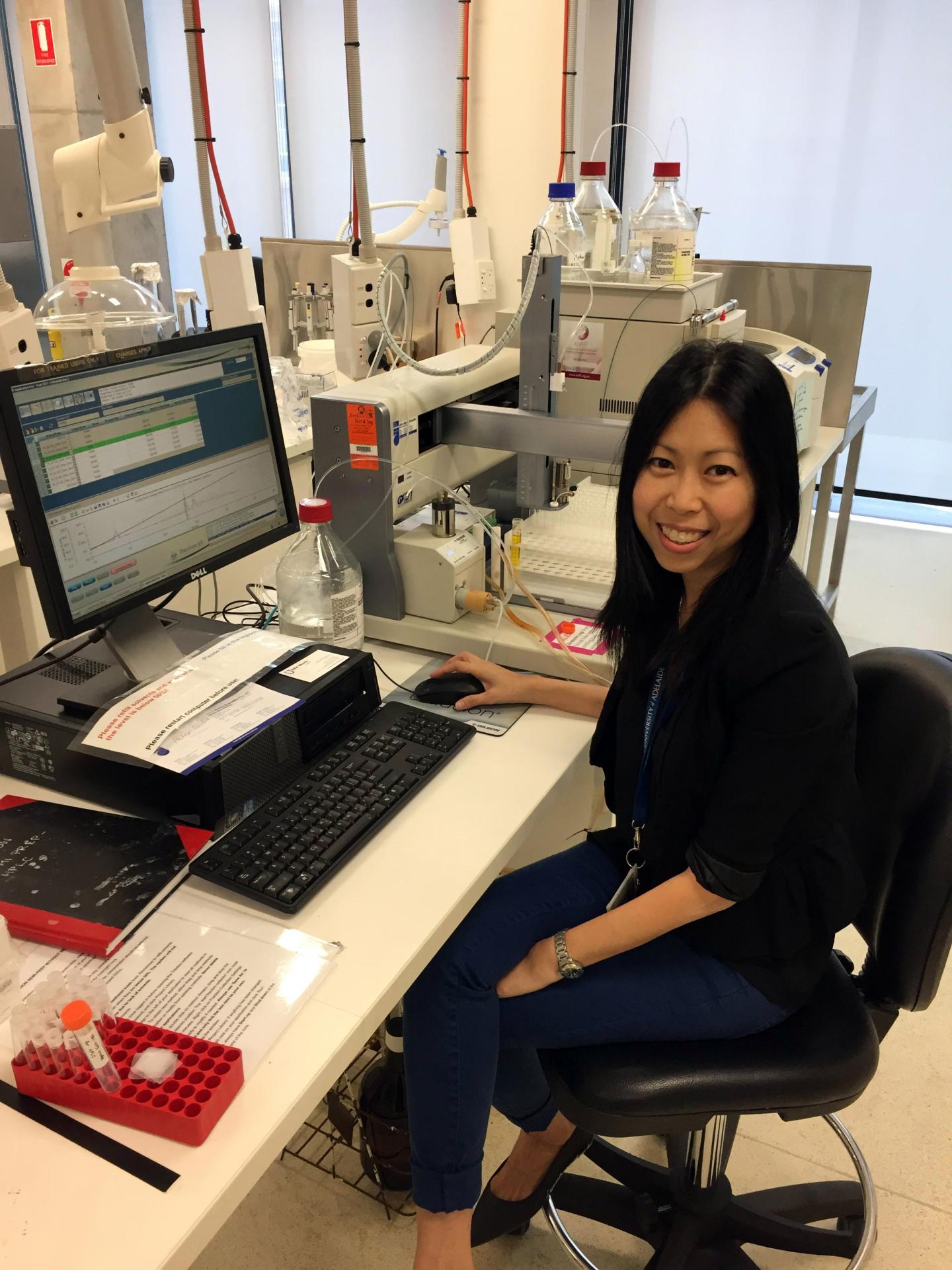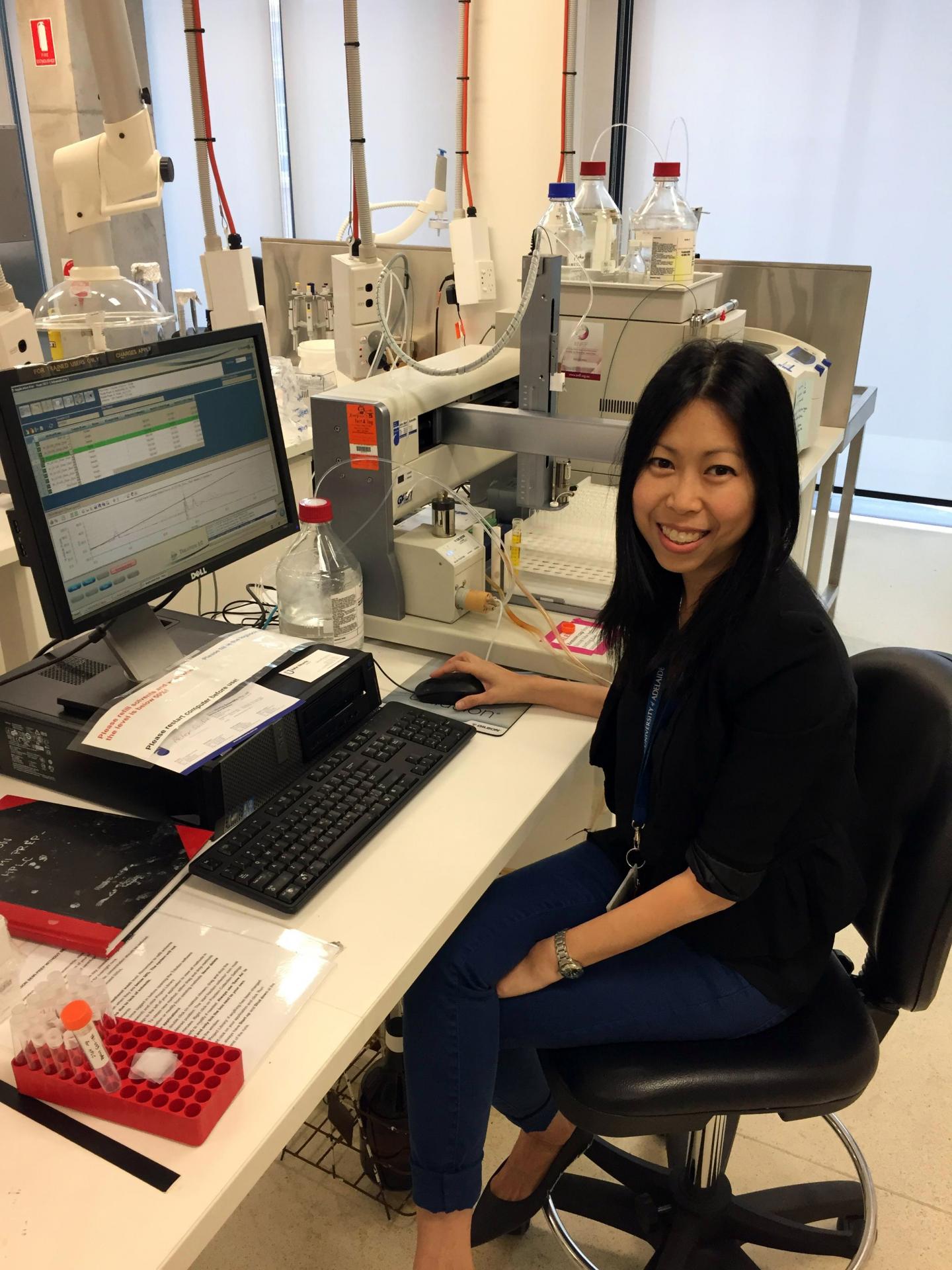
Credit: CNBP
A new zinc sensor has been developed by researchers, which will allow for a deeper understanding of the dynamic roles that metal ions play in regulating health and disease in the living body.
The research, published in the journal ACS Omega reports that the newly designed chemical sensor can detect and measure zinc levels in cells. It also has the functionality and portability to take continuous or repeated measurements within a single biological sample.
"This makes the sensor potentially suitable for use in future diagnostic tools that could open up entirely new windows into the body," says lead author of the research Dr Sabrina Heng, Research Fellow at the ARC Centre of Excellence for Nanoscale BioPhotonics (CNBP), at the University of Adelaide.
"Metal ions, including zinc, play crucial roles in cellular and life function–and a deficiency or change in the level of metal ions is often associated with disease," she says.
"Excess zinc in the body for example, is a possible sign of Alzheimer's or Parkinson's disease, or sometimes a serious bacterial infection."
The issue, says Dr Heng, is that current methods just give a snapshot at one particular point in time. Patient samples are generally tested for metal ion levels using specialised pathology equipment in laboratories. "In order to gain a deeper understanding of the dynamic roles that zinc and other metal ions play in regulating health and disease, it is important to develop new portable sensor technologies that can be used to probe metal ions within the body in real-time," she says.
Ideally she notes, the sensor needs to be able to be made to turn 'on' and 'off' using a switch of some kind.
"This means that multiple measurements can be made without the need to change the sensor. This also permits continual and non-invasive study."
What Dr Heng has done is to harness the power of light in the development of a new and innovative sensor, explains Professor Andrew Abell, CNBP Chief Investigator at the University of Adelaide and co-author on the research paper.
"The special characteristics of this zinc sensor sit at the chemical and molecular level," he says.
"One part of the sensor is a special chemical molecule, spiropyran, which sits on an advanced optical fibre–it's tailored to bind onto the zinc ion in the cells that are being examined."
"When the zinc is bound it fluoresces after it's been exposed to UV light from the fibre. The fluorescence intensity is dependent on the amount of zinc that is present."
"Treating this same sample with white light then un-binds the metal ion and reverts the sensor chemical back to its starting state, ready to be used again. This switching can be done many times without losing reliability or sensitivity."
"Adding such molecules to our sensing devices is important as it gives us the ability to control our sensing devices with the simple flip of a light switch," he says.
Dr Heng sees this research as a pivotal step in the development of future sensing tools that could be used by medical practitioners in their clinics.
"The next generation of healthcare will see increasing levels of smart med-tech available to doctors and specialists who will be able to undertake increased diagnoses on the spot."
"This new CNBP sensor could offer the ability for instant analysis of zinc levels within the body, without the need to wait for time consuming test results from specialist diagnostic laboratories," she says.
"This is a step towards an increasingly intelligent future. Real-time diagnosis means less time-delay in treatment for patients."
###
This research was funded by the ARC Centre of Excellence for Nanoscale BioPhotonics (CNBP) with researchers located at the University of Adelaide, RMIT University and the University of South Australia.
IMAGES:
CNBP Research Fellow, Dr Sabrina Heng – http://flic.kr/p/YfrpWA
CNBP Research Fellow, Dr Sabrina Heng – http://flic.kr/p/XBFKD8
CNBP Chief Investigator Prof Andrew Abell – http://flic.kr/p/MRi9eS
RESEARCH PAPER: A Rationally Designed Probe for Reversible Sensing of Zinc and Application in Endothelial Cells.
URL: http://pubs.acs.org/doi/abs/10.1021/acsomega.7b00923
MEDIA CONTACTS:
Dr Sabrina Heng
CNBP, University of Adelaide
+61 8 8313 2364 (office) +61 8 8313 2390 (lab)
+61 435353109 (mobile)
[email protected]
Tony Crawshaw
Communications and PR
Centre for Nanoscale BioPhotonics (CNBP)
Macquarie University, Sydney
0402770403
[email protected]
Media Contact
Dr. Sabrina Heng
[email protected]
61-435-353-109
@UniofAdelaide
http://www.adelaide.edu.au
Related Journal Article
http://dx.doi.org/10.1021/acsomega.7b00923





